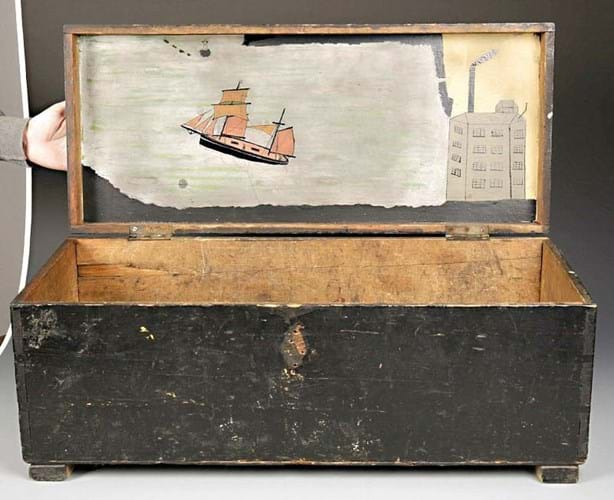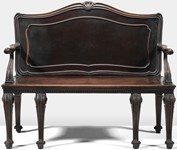
At Weymouth Magistrates Court on October 30, the firm pleaded guilty to eight charges under the 2008 Unfair Trading Regulations and was fined £6300, plus costs of £11,805 and a £170 victim surcharge.
The court heard how in February 2016 Duke’s was offered a cache of unseen works, purportedly by Wallis.
The vendor said they had come by descent from Emma Perkin whose aunt cared for the artist in old age and were stored in a Falmouth attic from 1961 -2006. Duke’s sought the advice of the Wallis scholar Edward Mullins, who wrote a foreword to the catalogue entries free of charge.
However, after considerable ‘cash in the attic’ type publicity, doubts were subsequently cast on the provenance. Duke’s was told that a Player’s Navy Cut cigarette packet – carrying a pencil drawing to the verso – was a type not made until 14 years after the artist’s death and full paint analysis was recommended.
Richard Herringshaw, presenting the case in court for Dorset Trading Standards, said that Duke’s failed to follow these up – “actions that didn’t live up to the standard of care we would expect from a fine art auctioneer”.
Before the September 15-16 sale, Dorset Trading Standards chose to seize the items that technical analysis later concluded “were produced with deceptive intent, in relatively recent times, in order to resemble authentic pieces by Wallis”.
The costs of forensic analysis (around £680 per paint sample) were among those borne by Duke’s.
‘Acting in good faith’
Duke’s says it had been the victim of the dishonesty of others. A statement said: “We acted in good faith at all times and had shown the paintings to an expert. Our moral instinct was to defend the case – but we took a commercial decision to strike a deal, however hard it was to swallow.”
Nonetheless, the firm told ATG that shrugging off doubts had been a mistake, particularly in the context of an artist such as Wallis where attribution is so often problematic.
The auction house says “a whole series of new procedures are now in place to ensure that in future all partners must agree due diligence has been carried out”.
The source of the fakes is currently unclear. “As the victims in this case we very much hope that the relevant authorities will pursue the perpetrators of these forgeries and bring them to book,” said Duke’s.
Herringshaw told ATG: “We have not been able to establish who produced the work but if evidence came forward we would happily investigate.”
ATG comment
Fakes are an occupational hazard for dealers and auctioneers, writes Roland Arkell. But the nub of this case is not that the items turned out to be wrong: it was a question of due diligence. Duke’s decision not to seek a second opinion, the court decided, amounted to a failure in an obligation “to take reasonable steps to ensure that the claims and descriptions applied to items they are selling are true”.
There is a lesson there for all.
Nonetheless, it is difficult not to feel some sympathy with an auctioneer that has taken a considerable financial and reputational blow for a deception not of its own making. The real bad guys in this story – the fakers – are yet to break cover.














